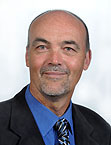David B. O'Gorman

Position: Assistant Professor
Degree: MSc PhD
Postdoctoral Fellowship: 2001-2003, 2003-2005 Children's Health Research Institute
Research interests: Dupuytren’s contracture, wound healing, fibrosis, extracellular matrix-growth factor interactions
Office: Lawson Health Research Institute, Room E2-137
Phone: 519.646.6100 Ext. 64397 (Office) Ext. 65347 (Lab)
Fax: 519.646.6049
E-mail: dogorman@uwo.ca
Laboratory Info: The Cell and Molecular Biology laboratory of the Hand and Upper Limb Center is co-directed by Dr. Bing Siang Gan, a plastic surgeon and physician/scientist, and Dr. David O'Gorman, a molecular biologist. The primary research interests of the lab are the molecular mechanisms that promote Dupuytren's disease progression and recurrence, and fibroproliferative conditions such as hypertrophic scarring and frozen shoulder syndrome. Cell and Molecular Biology lab personnel are skilled in the isolation and culture of primary cells from surgically resected tissues onto collagen and other culture substrates that more closely mimic their in vivo origins. The cell culture facility includes a Flexcell unit, allowing us to mimic biomechanical interactions of primary cells in two and three-dimensional environments under physiologically relevant stress. The lab has expertise in assessing DNA, RNA and protein expression, interactions and signaling pathway analyses. Finally, the lab has a deconvolution fluorescence microscope unit for two and three-dimensional imaging of primary cells in culture.
Residents and other staff with interests in the molecule mechanisms of scarring, Dupuytren's disease and other fibroproliferative diseases are welcome discuss their research goals with Drs Gan and O'Gorman. The lab offers training in primary cell culture and a variety of molecular biology techniques including DNA/RNA isolation, real-time PCR quantification, chromatin immunoprecipitation, western immunoblotting, immunofluorescence microscopy, and a variety of cell proliferation, differentiation and apoptosis assays.








